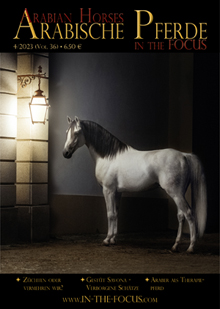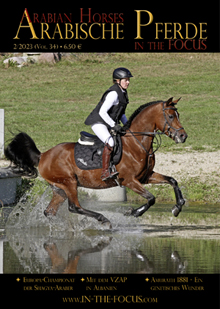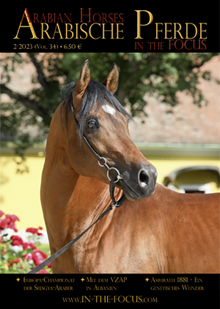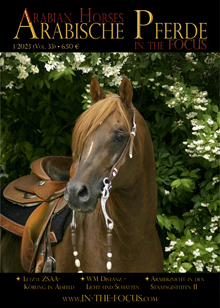Sometimes in the world of Arabian horses, opinions are fiercely clashing. For example, there is a dispute in every second Facebook post about whether or not you can ride show horses. The views here are far apart and are vehemently defended by their respective representatives (mostly females…). From a categorical “no” to “yes, of course!” everything is in it. However, some important factors are likely “overlooked”.
First, one must define in this discussion: What is a modern show horse? Is it a horse that was at a show at some point in his life, or perhaps even became champion somewhere? Or do we mean by the term “modern show horse”, one that stands at the top of the big title shows? I for my part, mean the latter, because here you will indeed find conformational features that are not compatible with a serious use as a riding horse.
The next consideration is, especially if we look at the lineages, when was the horse or its ancestors successful at shows? To a great extent the change of the conformation (towards ever finer horses with extremely long lines, i.e. long backs, long necks, long legs, bad angulation of the hind legs, horizontal croup, etc.) in this totality took place only from the year 2000 onwards. Horses before this date may well have certain riding characteristics and yet have been successful at shows – or vice versa. I would also like to say that in Germany, Austria and Switzerland, there are no modern show horses of the top class, or at least they can be counted with only two hands.
Next, you must define what you understand by the term “riding”? Is it just to sit on a horse and let yourself be carried around? Leisure riding without high demands on the horse (and yourself)? Or competitive riding, be it dressage, western or endurance – and yet successful in moderate difficulty levels? Personally, I mean the latter, and for this the horse really needs certain conformational and interior features, such as the hard-to-measure criteria of willingness to work, rideability and ability to co-operate – all this can only be judged when working with the horse.
But there is no controversial area with just black and white – there is not only the world champion or the dressage superstar. Rather, these are extremes, and 90% of us and our horses are in the grey area somewhere in between. So, if I go once in a while with my horse to a smaller show, I’m still not a “show horse breeder”, and if I let myself be carried around by a horse through a beautiful landscape, I’m still far from being a rider, and my horse is far from being the “super-riding horse”, just because it tolerates me on his back. It’s true that most horses can be ridden, but how well they will perform with their respective conformation, how capable they are (mentally), how long they last (due to conformational faults), how much joy I have with them – these are questions everyone has to answer for themselves. And a differentiated answer is usually longer than a Facebook post.
Gudrun Waiditschka
Oct 04 2019












